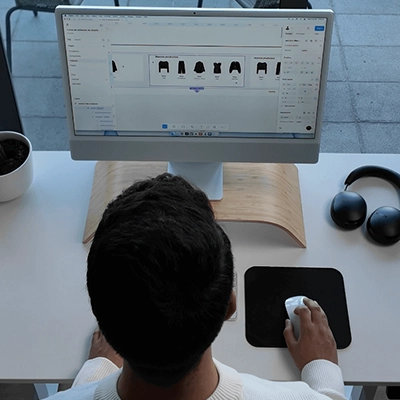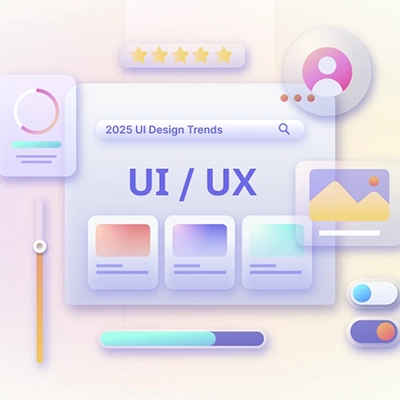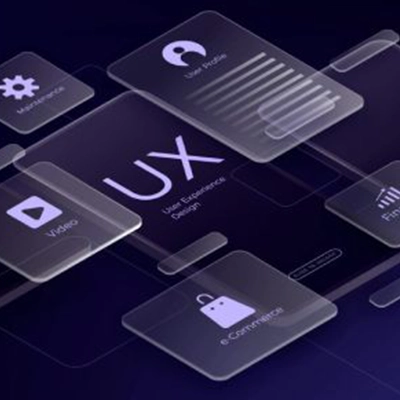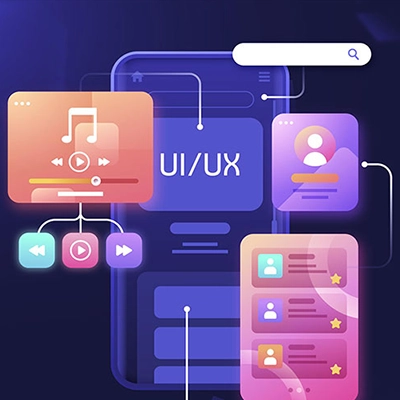UX/UI Design Trends That Increase Conversions
UX/UI design trends are revolutionizing the way brands interact with users. A good design not only looks good, but also drives conversions by enhancing the user experience. In 2025, a focus on human behavior, simplicity, and personalization will make the difference between a website that converts and one that doesn’t. Below are the key trends generating real results.
1. Smart Microinteractions
Microinteractions are small animations or effects that guide the user during their journey. They are subtle but powerful. They provide feedback, indicate loading states, or confirm actions. In 2025, these microinteractions will become even more personalized, reacting to user behavior in real time.
For example, a cart icon that vibrates when a product is added or an animation that shows form progress improves clarity and keeps the user engaged. This trend enhances retention and builds trust—both essential for conversion.

2. Minimalist Design Focused on Content
Less is more. Minimalist design remains one of the most effective UX/UI design trends. By eliminating unnecessary elements, content stands out, distractions are reduced, and website performance improves.
A clean interface with a clear visual hierarchy allows the user to focus on what matters: the message and the intended action. Calls to action stand out more and boost conversion rates.

3. Dark Mode and Visual Personalization
Dark mode is not only visually appealing—it also enhances the experience in low-light environments and reduces eye strain. Many modern interfaces allow users to toggle between light and dark modes, increasing accessibility and adapting to their preferences.
This personalized approach creates a sense of control and comfort, factors that influence purchasing decisions and time spent on the site.
4. Smooth Navigation with Dynamic Menus
Navigation is the backbone of any digital experience. Today’s UX/UI design trends prioritize smooth navigation using floating menus, sticky bars, and contextual navigation. These elements help users move through a site without losing access to key functions.
For instance, menus that adapt based on the section the visitor is viewing improve usability and reduce friction. A simple navigation experience leads to longer site visits and a higher chance of conversion.
5. Smooth Animations and Scroll Storytelling
Using soft animations and techniques like scroll storytelling creates an immersive experience. As users scroll, content is presented progressively, building a visually engaging narrative.
This trend enhances message clarity and user attention. When content is presented sequentially and visually stimulating, click-through and conversion rates tend to increase.

6. Smart and Adaptive Forms
One of the biggest drop-off points on a website is poorly designed or overly long forms. In 2025, UX-centric forms will be short, dynamic, and tailored to each user type. Step-by-step forms, conditional fields, and autocomplete will reduce friction.
Adding visual elements like progress bars, real-time validation, and motivational messages increases form completion rates—and thus, conversions.
7. Purposeful Typography and Color
Typography and color schemes are no longer just aesthetic choices. New UX/UI design trends use these elements as persuasion tools. Readable typefaces with clear hierarchy and colors that evoke emotions or highlight key actions are crucial for guiding the user.
Proper contrast improves accessibility and highlights buttons or important links, helping guide user actions toward conversion.

8. Inclusion and Accessibility as Priorities
An accessible website is an effective website. Modern UX/UI design incorporates best accessibility practices: keyboard navigation, screen reader tags, subtitles, sufficient contrast, etc. This not only broadens your reach, but also demonstrates social responsibility and professionalism.
Brands that prioritize digital inclusion often generate more trust, which directly influences user decisions.

 info@digitalnexustec.com
info@digitalnexustec.com +51 979 363 455
+51 979 363 455



